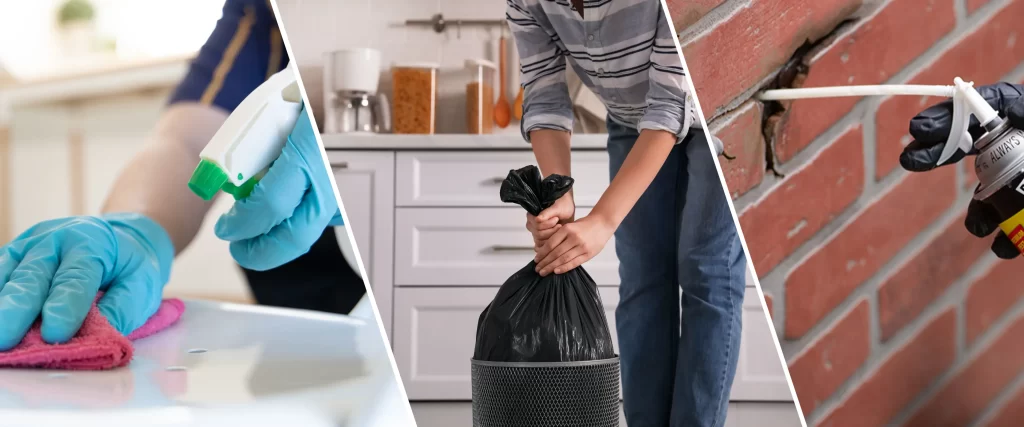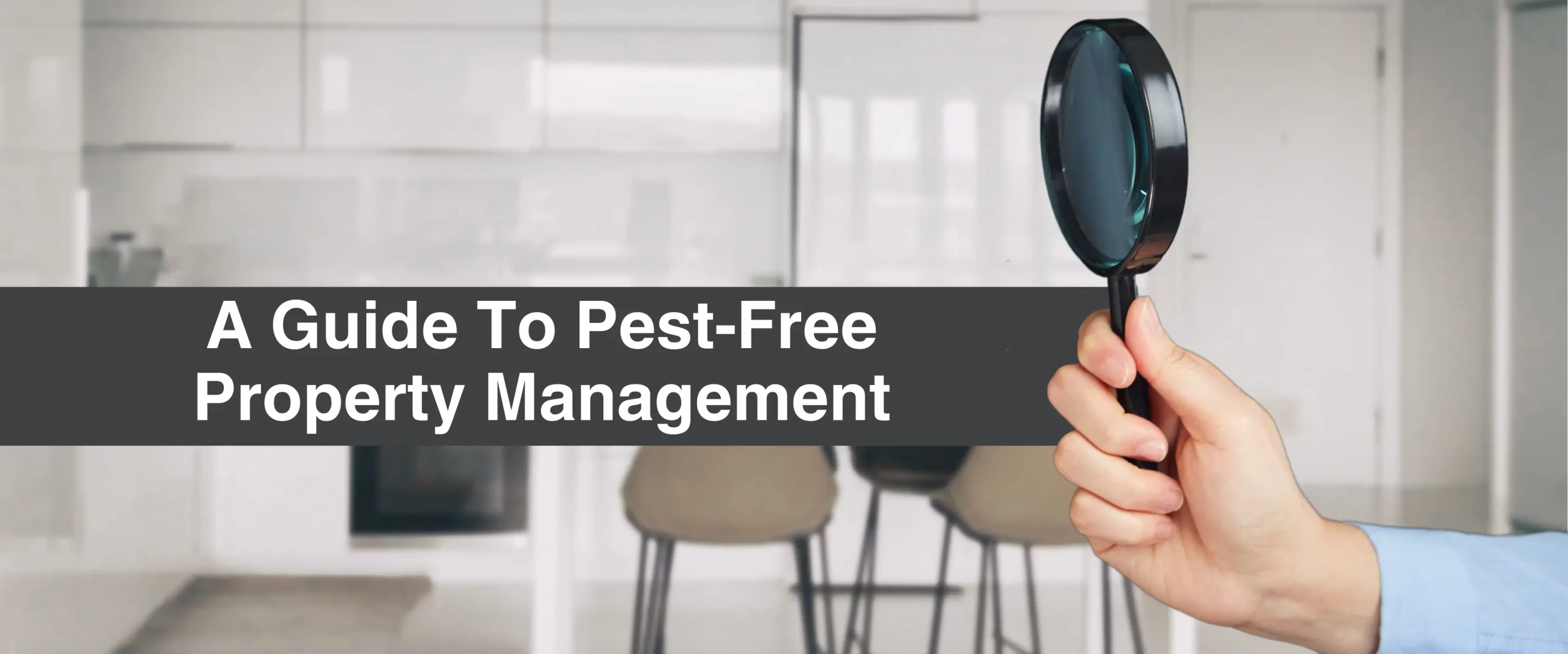Conducting regular property inspections for pests is a critical aspect of maintaining a healthy and pest-free environment in both residential and commercial buildings. By following a proactive approach and implementing effective pest control strategies, property managers can create a comfortable and safe living and working environment for occupants. In this comprehensive guide, we’ll explore the steps to conduct property inspections, essential building maintenance practices for pest control, and tips for educating tenants about pest prevention, with a focus on New York City where pest issues are prevalent.
Property Inspections for Pest Control:
Scheduling regular inspections:
Establish a routine schedule for property inspections to proactively monitor for pest activity. The frequency of inspections may vary depending on the property type, location, and history of pest problems.
Identifying Common Pests:
Familiarize yourself with common pests in your area, such as rodents, cockroaches, ants, bed bugs, and termites. Understand the signs of infestations and the areas where pests are likely to hide or enter the building.
Inspecting exterior areas:
Start the inspection by examining the exterior of the building, including the foundation, walls, roof, and landscaping. Look for cracks, gaps, and openings that pests could use to enter the building. Check for signs of pest activity, such as droppings, nests, or chew marks.
Checking entry points:
Focus on entry points like doors, windows, vents, pipes, and utility lines. Ensure that these entry points are properly sealed and secured to prevent pests from gaining access to the interior of the building.
Inspecting Common Areas and Tenant Units:
Thoroughly inspect common areas, hallways, basements, storage areas, and utility rooms where pests are more likely to hide or nest. Look for signs of pest activity, such as droppings, gnaw marks, damaged materials, or unusual odors. If allowed by the lease agreement, conduct inspections of tenant units to check for signs of pest infestations. Communicate with tenants to schedule inspections and address any pest issues identified during the inspection.
Addressing moisture issues:
Moisture can attract pests like cockroaches, ants, and rodents. Inspect for leaks, standing water, condensation, and damp areas that could promote pest infestations. Address any moisture issues promptly to prevent pest problems.
Documenting Findings:
Keep detailed records of your inspections, including the areas inspected, findings, pest activity observed, and any corrective actions taken. Documentation can help track pest trends, monitor pest control efforts, and demonstrate compliance with regulations.
Collaborating with Pest Control Professionals:
If pest issues are identified during the inspection, work with licensed pest control professionals to develop a treatment plan tailored to the specific pest problem. Follow up with post-treatment inspections to ensure effectiveness.
Educating Tenants:
Provide tenants with information on pest prevention, signs of infestations, and reporting procedures. Encourage tenants to report any pest sightings promptly to facilitate timely intervention and control.
Building Maintenance Practices for Pest Control:

Proper building maintenance is essential for effective pest control in residential and commercial buildings. By implementing preventive measures and addressing maintenance issues promptly, property managers can help minimize the risk of pest infestations. Here are some building maintenance practices that can support pest control efforts:
Sealing Entry Points:
Inspect the building regularly for cracks, gaps, and holes that pests can use to enter the premises. Seal these entry points using caulk, weather stripping, or other appropriate materials to prevent pests like rodents, cockroaches, and ants from gaining access.
Maintaining Cleanliness:
Keep common areas, hallways, and storage areas clean and free of debris. Regularly clean up spills, dispose of trash properly, and remove clutter that can provide hiding spots for pests.
Proper Waste Management:
Implement a proper waste management system, including trash disposal guidelines for tenants. Ensure that garbage bins are emptied regularly, stored in sealed containers, and located away from the building to prevent pest attraction.
Landscaping Maintenance:
Maintain the landscaping around the building to reduce pest habitats. Trim bushes and trees away from the structure, remove standing water, and address any drainage issues to prevent pests like mosquitoes and rodents.
Regular Inspections:
Conduct regular inspections of the building to identify potential pest entry points, signs of infestations, and conditions conducive to pest activity. Address any issues promptly to prevent pest problems from escalating.
Proper Storage:
Encourage tenants to store food in airtight containers and to keep storage areas organized and clutter-free. Proper food storage can help prevent pests like pantry pests and rodents from accessing food sources.
Pest-Proofing Measures:
Install pest-proofing devices such as door sweeps, window screens, and air vents with mesh screens to prevent pests from entering the building. Consider installing pest control devices like traps and baits in strategic locations.
Collaborating with Pest Control Professionals:
Work with licensed pest control professionals to develop an integrated pest management (IPM) plan for the building. Regularly schedule inspections and treatments as needed to prevent and control pest infestations effectively.
Tenant Education:
Educate tenants about their role in pest control prevention, including proper sanitation practices, reporting pest sightings promptly, and cooperating with pest control efforts. Provide tenants with information on common pests, signs of infestations, and preventive measures.
Educating Tenants about Pest Control Prevention in NYC:
Educating tenants about pest control prevention is crucial in New York City, where pests like cockroaches, rodents, bed bugs, and others can be common issues in residential buildings. Here are some tips and information that can be helpful for tenant education about pest control prevention in NYC:
Keeping Living Spaces Clean:
Encourage tenants to maintain a clean living environment by regularly cleaning up spills, crumbs, and food debris. Pests are attracted to food sources, so reducing these attractants can help prevent infestations.
Proper Garbage Disposal:
Instruct tenants to properly dispose of garbage in sealed containers and to take out the trash regularly. Leaving garbage exposed can attract pests like cockroaches and rodents.
Sealing Entry Points:
Inform tenants about the importance of sealing cracks, gaps, and holes in walls, floors, and around pipes to prevent pests from entering the unit. This can help keep out pests like mice and roaches.
Reporting Maintenance Issues Promptly:
Encourage tenants to report any maintenance issues that could contribute to pest problems, such as leaking pipes, damp areas, or damaged screens. Addressing these issues promptly can help prevent pest infestations.
Bed Bug Prevention:
Provide information to tenants about how to prevent bed bug infestations, such as being cautious when bringing in secondhand furniture, regularly inspecting for signs of bed bugs, and reporting any suspected infestations immediately.
Educating about Common Pests:
Help tenants identify common pests in NYC and educate them on the signs of infestations. Provide information on what to do if they suspect a pest problem, such as contacting the landlord or property manager.
Collaborating with Pest Control Professionals:
Work with pest control professionals to conduct regular inspections and treatments in the building. Inform tenants about scheduled pest control services and provide guidance on preparing their units for treatment.
Tenant Responsibilities:
Clearly outline tenants’ responsibilities regarding pest control in the lease agreement. This can include provisions on cleanliness, proper food storage, and reporting pest issues promptly.
Providing Educational Materials:
Distribute educational materials, such as pamphlets, brochures, or posters, on pest control prevention tips and information. Consider organizing workshops or seminars for tenants on pest prevention.
FAQs:
How often should property inspections for pests be conducted?
The frequency of inspections may vary depending on factors such as property type, location, and history of pest problems. However, it’s generally recommended to conduct inspections at least quarterly.
What should tenants do if they suspect a pest infestation in their unit?
Tenants should report suspected pest infestations to the landlord or property manager immediately. Prompt reporting allows for timely intervention and control measures.
What can property managers do to prevent bed bug infestations in buildings?
Property managers can educate tenants about bed bug prevention measures, conduct regular inspections, and collaborate with pest control professionals to implement preventive treatments as needed.
By following these comprehensive guidelines and fostering collaboration between property managers, tenants, and pest control professionals, maintaining a pest-free environment in residential and commercial buildings can be achieved effectively.

